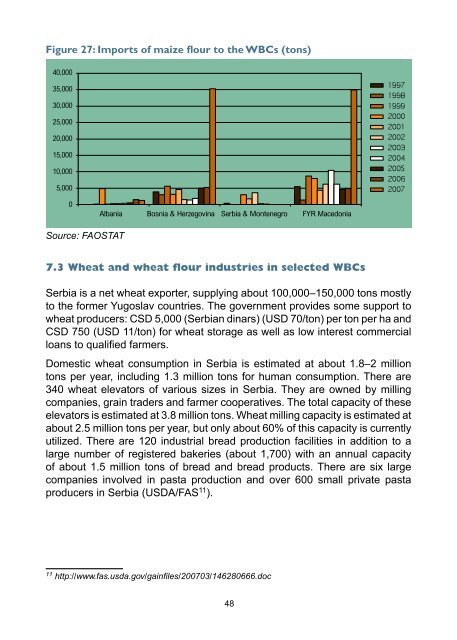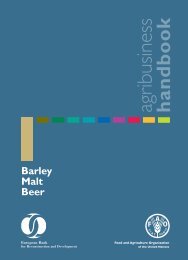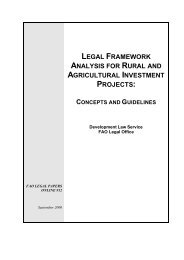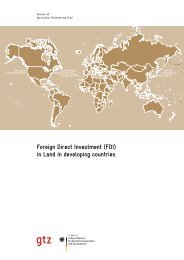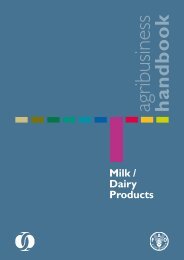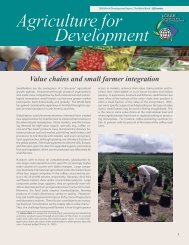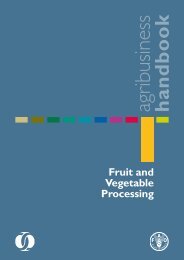Wheat Flour
Wheat Flour
Wheat Flour
You also want an ePaper? Increase the reach of your titles
YUMPU automatically turns print PDFs into web optimized ePapers that Google loves.
Figure 27: Imports of maize flour to the WBCs (tons)<br />
40,000<br />
35,000<br />
30,000<br />
25,000<br />
20,000<br />
15,000<br />
10,000<br />
5,000<br />
0<br />
Albania Bosnia & Herzegovina Serbia & Montenegro FYR Macedonia<br />
Source: FAOSTAT<br />
7.3 <strong>Wheat</strong> and wheat flour industries in selected WBCs<br />
Serbia is a net wheat exporter, supplying about 100,000–150,000 tons mostly<br />
to the former Yugoslav countries. The government provides some support to<br />
wheat producers: CSD 5,000 (Serbian dinars) (USD 70/ton) per ton per ha and<br />
CSD 750 (USD 11/ton) for wheat storage as well as low interest commercial<br />
loans to qualified farmers.<br />
Domestic wheat consumption in Serbia is estimated at about 1.8–2 million<br />
tons per year, including 1.3 million tons for human consumption. There are<br />
340 wheat elevators of various sizes in Serbia. They are owned by milling<br />
companies, grain traders and farmer cooperatives. The total capacity of these<br />
elevators is estimated at 3.8 million tons. <strong>Wheat</strong> milling capacity is estimated at<br />
about 2.5 million tons per year, but only about 60% of this capacity is currently<br />
utilized. There are 120 industrial bread production facilities in addition to a<br />
large number of registered bakeries (about 1,700) with an annual capacity<br />
of about 1.5 million tons of bread and bread products. There are six large<br />
companies involved in pasta production and over 600 small private pasta<br />
producers in Serbia (USDA/FAS 11 ).<br />
11<br />
http://www.fas.usda.gov/gainfiles/200703/146280666.doc<br />
48


